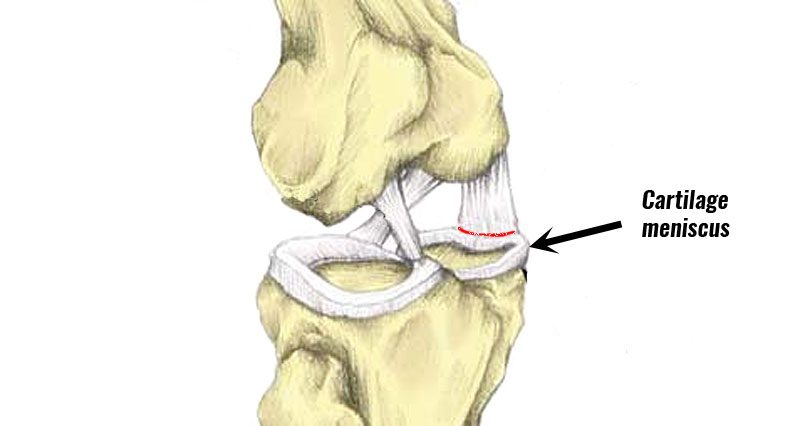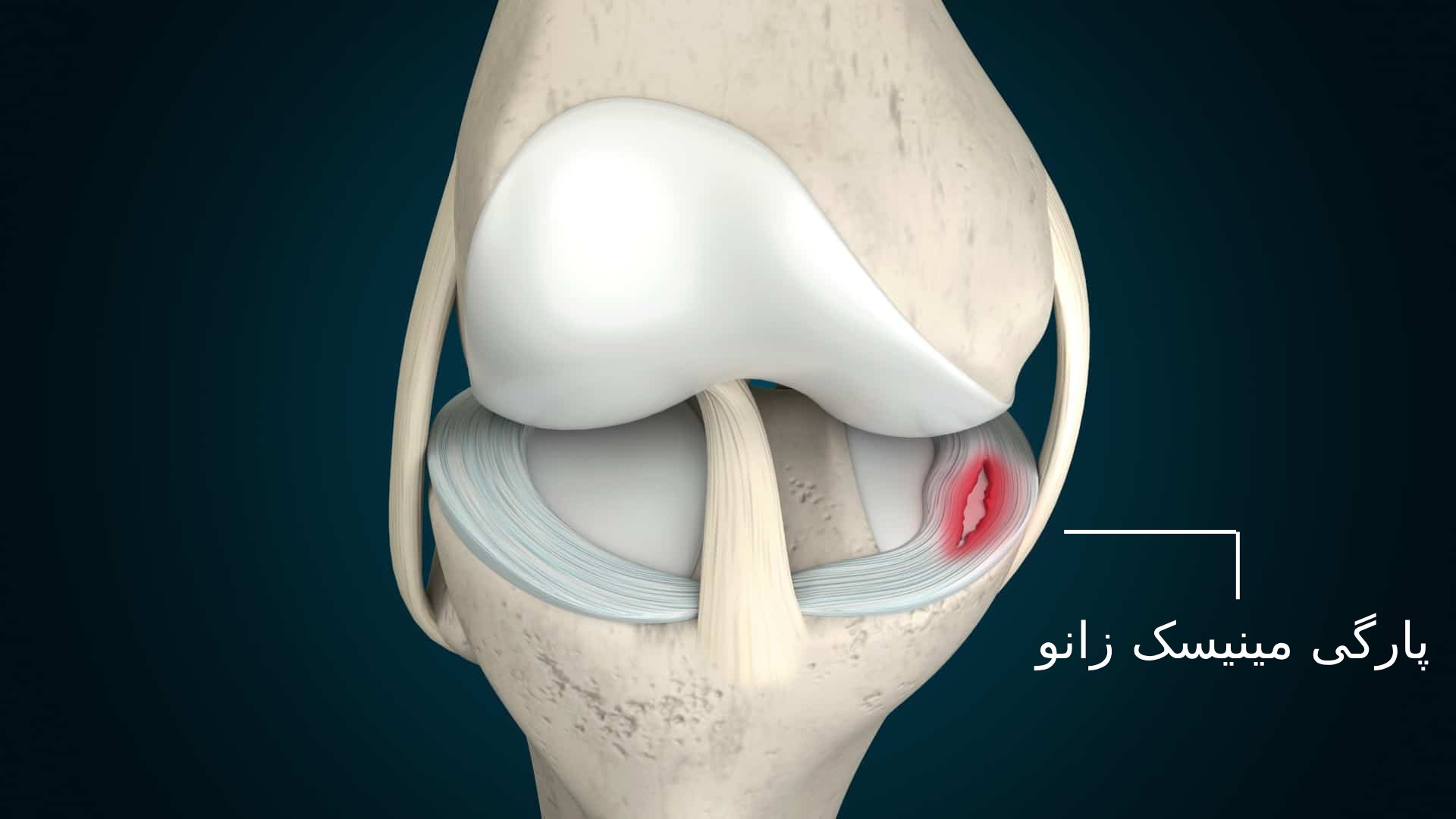Understanding the Torn Meniscus

A torn meniscus is a common knee injury that occurs when the cartilage that cushions the knee joint is torn. The meniscus is a C-shaped piece of cartilage that acts as a shock absorber between the femur (thigh bone) and the tibia (shin bone). It helps to distribute weight evenly across the knee joint, allowing for smooth movement and stability.
Anatomy of the Meniscus and its Role in the Knee Joint, Torn meniscus
The meniscus is made up of two parts: the medial meniscus and the lateral meniscus. The medial meniscus is located on the inner side of the knee joint, while the lateral meniscus is located on the outer side. Both menisci are attached to the tibia and femur by ligaments. The meniscus plays a crucial role in the knee joint by:
- Providing cushioning and shock absorption
- Distributing weight evenly across the knee joint
- Improving stability and range of motion
- Reducing friction between the bones
Types of Meniscus Tears and Their Causes
Meniscus tears can occur in various ways, depending on the type of tear and the underlying cause. Some common types of meniscus tears include:
- Horizontal tear: This type of tear runs across the width of the meniscus.
- Radial tear: This type of tear runs from the outer edge of the meniscus towards the center.
- Oblique tear: This type of tear runs diagonally across the meniscus.
- Degenerative tear: This type of tear occurs due to wear and tear on the meniscus over time.
The most common causes of meniscus tears include:
- Sports injuries: These injuries often occur during activities that involve twisting or pivoting movements, such as basketball, soccer, and skiing.
- Direct trauma: A direct blow to the knee, such as a fall or a car accident, can also cause a meniscus tear.
- Degeneration: Over time, the meniscus can degenerate and become more prone to tearing.
Symptoms of a Torn Meniscus
The symptoms of a torn meniscus can vary depending on the severity of the tear. Some common symptoms include:
- Pain: Pain is often felt in the knee joint, especially during activities that involve twisting or pivoting movements.
- Swelling: The knee joint may swell after the injury.
- Stiffness: The knee may feel stiff and difficult to move.
- Clicking or popping: Some people may hear a clicking or popping sound in their knee joint.
- Locking or catching: The knee may lock or catch during movement.
- Giving way: The knee may give way or feel unstable.
Diagnosis and Treatment Options

A torn meniscus is a common knee injury that can occur due to various factors, such as a sudden twisting or forceful impact. Determining the extent of the tear and the best treatment approach requires a thorough evaluation by a healthcare professional.
Diagnostic Methods
Diagnosing a torn meniscus typically involves a combination of physical examination, imaging tests, and medical history.
- Physical Examination: A doctor will examine your knee, assessing its range of motion, stability, and tenderness. They may also perform specific tests to assess the integrity of the meniscus, such as the McMurray test, which involves rotating the knee and listening for a clicking sound.
- Imaging Tests:
- Magnetic Resonance Imaging (MRI): MRI is the gold standard for diagnosing a torn meniscus. It provides detailed images of the knee joint, allowing doctors to visualize the meniscus and identify the location, size, and severity of the tear.
- X-ray: While X-rays primarily reveal bone structures, they can help rule out other conditions like fractures or arthritis that might mimic a torn meniscus.
Non-Surgical Treatment Options
For many people with a torn meniscus, non-surgical treatment options can be effective in managing pain and restoring function.
- RICE Therapy: This acronym stands for Rest, Ice, Compression, and Elevation. It’s a common first-line treatment for many injuries, including a torn meniscus.
- Rest: Avoid activities that put stress on your knee, such as running or jumping.
- Ice: Apply ice to the injured area for 15-20 minutes at a time, several times a day.
- Compression: Use a compression bandage to reduce swelling.
- Elevation: Keep your leg elevated above your heart to help reduce swelling.
- Pain Medication: Over-the-counter pain relievers like ibuprofen or acetaminophen can help manage pain and inflammation. In some cases, your doctor may prescribe stronger pain medications.
- Physical Therapy: Physical therapy plays a crucial role in rehabilitation after a torn meniscus. A physical therapist can teach you exercises to strengthen your knee muscles, improve range of motion, and enhance stability.
Surgical Procedures
If non-surgical treatments fail to provide relief, surgery may be recommended.
- Arthroscopic Surgery: This minimally invasive procedure involves using a small camera and surgical instruments inserted through tiny incisions in the knee.
- Meniscectomy: This involves removing the torn portion of the meniscus. It is often performed when the tear is extensive or the damaged tissue is not repairable.
- Meniscus Repair: In some cases, the torn meniscus can be repaired by stitching it back together. This procedure is typically performed when the tear is small and involves healthy tissue.
Recovery and Rehabilitation

Recovering from a torn meniscus can be a challenging journey, but with proper care and dedication to rehabilitation, you can regain your mobility and return to your desired activities. The recovery process involves a combination of immobilization, physical therapy, and pain management.
Post-Operative Recovery
The first few weeks after surgery are crucial for healing and minimizing complications. Your surgeon will provide specific instructions based on the type of surgery performed. Here’s a general overview of the post-operative recovery process:
Immobilization
- You will likely be placed in a brace or sling to protect the knee and promote healing. This will help to keep the knee in a straight position and prevent further injury.
- The amount of time you need to wear the brace will vary depending on the severity of the tear and the type of surgery performed. Your surgeon will advise you on the duration of immobilization.
Physical Therapy Exercises
- Physical therapy is an essential component of recovery, starting shortly after surgery. Your therapist will guide you through a personalized program to regain strength, flexibility, and range of motion in your knee.
- Exercises will progress gradually, starting with simple movements like ankle pumps and quadriceps contractions.
- As you progress, you’ll move on to more challenging exercises, including hamstring curls, calf raises, and knee flexion exercises.
Pain Management
- Pain management is an important aspect of recovery. Your surgeon will prescribe pain medication as needed.
- You may also be advised to use ice packs and elevation to reduce swelling and pain.
- It’s crucial to follow your surgeon’s instructions regarding pain management to ensure proper healing.
Expected Timeline for Recovery
The recovery timeline for a torn meniscus can vary depending on factors such as the severity of the tear, the type of surgery performed, and individual factors. Here’s a general timeline of expected milestones and potential complications:
| Timeline | Milestones | Potential Complications |
|---|---|---|
| First 2-4 weeks | – Immobilization with brace or sling – Gentle range of motion exercises – Pain management with medication and ice |
– Infection – Blood clots – Stiffness |
| 4-6 weeks | – Gradual weight-bearing – Increased range of motion exercises – Strengthening exercises |
– Delayed healing – Joint instability |
| 6-8 weeks | – Continued strengthening and flexibility exercises – Introduction of functional activities |
– Recurring pain – Loss of function |
| 8-12 weeks | – Gradual return to activities – Full weight-bearing |
– Persistent pain – Need for additional surgery |
Rehabilitation Program
A comprehensive rehabilitation program is essential for a successful recovery and return to your desired activity level. This program should incorporate strength training, flexibility exercises, and functional activities:
Strength Training
- Strength training exercises target the muscles surrounding the knee, including the quadriceps, hamstrings, and calf muscles.
- These exercises help to stabilize the knee, improve balance, and prevent future injuries.
- Examples of strength training exercises include squats, lunges, leg presses, and hamstring curls.
Flexibility Exercises
- Flexibility exercises are important for maintaining a full range of motion in the knee.
- Examples of flexibility exercises include knee extensions, hamstring stretches, and calf stretches.
Functional Activities
- Functional activities simulate real-life movements and help to prepare you for your desired activities.
- Examples of functional activities include walking, jogging, stair climbing, and jumping.
- These activities should be introduced gradually and progressively, starting with low-impact exercises and gradually increasing the intensity and complexity.
A torn meniscus is a common knee injury that can cause pain, swelling, and difficulty moving. The severity of the tear can vary, and treatment options may include rest, physical therapy, or surgery. If you’ve suffered a meniscus tear, understanding the path to meniscus tear recovery is crucial.
This knowledge can help you navigate the healing process and return to your active lifestyle.
A torn meniscus can be a serious injury for any athlete, especially those in high-impact sports. It’s important to understand how a team’s depth chart might be affected by such an injury, especially when considering the impact on a team like the Vikings.
You can see the current vikings depth chart to get a better idea of the potential impact of a meniscus tear on their roster. The Vikings are known for their strong offense, and losing a key player due to a meniscus injury could have a significant impact on their season.
